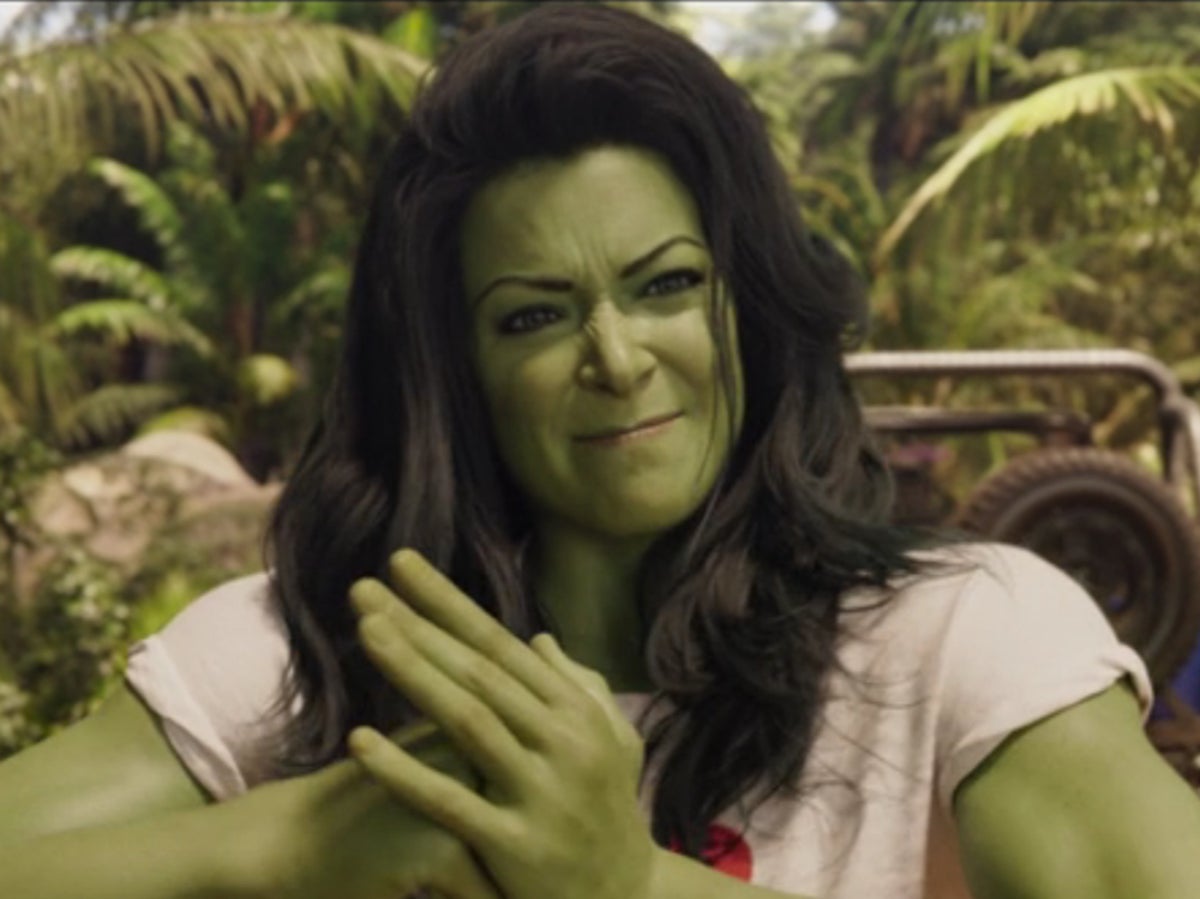
Don’t make him angry. You won’t like him when he’s angry. He’s… very expensive to animate when he’s angry. That’s how the old line went, right?
Marvel’s She-Hulk: Attorney at Law premiered on Disney+ this Thursday (18 August). A legal comedy set in the interconnected Marvel Cinematic Universe, the nine-episode series focuses on Jennifer Walters (Tatiana Maslany), the cousin of Bruce “The Hulk” Banner (Mark Ruffalo). She’s a talented lawyer who becomes imbued with Hulk-like powers after accidentally becoming contaminated with some of Banner’s blood. We all know how it works from there on out: first she gets mean, then she gets green.
Even before the series debuted, it had raised a few eyebrows. The trailer was taken to the kangaroo court of Twitter and sentenced to a week of hard ridicule; fans were quick to lampoon the seemingly iffy CGI used to render Maslany as her big, viridescent alter-ego. Whatever you think of how She-Hulk looks in the final product – personally, I’m not sure quite what photorealism people were expecting to find in a seven-foot-tall radioactive monster – it’s clear from the get-go that concerns about the CGI were valid. The nadir comes late in episode one when the two Hulks start duking it out in a remote jungle retreat. The fight quickly devolves into an ugly blur of weightless, cheap-looking digital effects.
Despite producing the biggest, most profitable film franchise in the world, Marvel Studios (a subsidiary of Disney), has seen its visual effects come under increased scrutiny in recent months. For all the many millions of dollars poured into special effects, too often the end result looks completely tacky. There are exceptions, of course – the vivid, stylised colour palette of Guardians of the Galaxy Vol 2; a few of the sequences in Sam Raimi’s recent Doctor Strange sequel; parts of WandaVision that played around with different TV-influenced aesthetics. But for the most part, Marvel has become synonymous with a certain kind of bombastic, charmless VFX mulch. Is it any wonder that the franchise is increasingly regarded as cinema’s answer to fast food?
This visual eyesore factor has become such a feature of the Marvel oeuvre that even the filmmakers have started calling them out for it. A couple of months ago, Taika Waititi somewhat ungraciously mocked some of the CGI in his recent film Thor: Love and Thunder, (though there’s no denying the scene in question looked jarring and slipshod). Many have rushed to defend the VFX houses that Marvel employs to implement its many special effects; they have argued that the blame falls squarely at Marvel’s feet.
“Working on #Marvel shows is what pushed me to leave the VFX industry,” tweeted Dhruv Govil, an artist who worked on films including Spider-Man: Homecoming and Guardians of the Galaxy. “They’re a horrible client, and I’ve seen way too many colleagues break down after being overworked, while Marvel tightens the purse strings.” Others have claimed similar. Marvel demands massive changes at short notice, and allegedly move deadlines without warning. You get the impression it’s a miracle the special effects end up remotely usable at all.
Jessica Gao, She-Hulk’s creator, has spoken about her own disconnect from the VFX side of things. “The machine just gets rolling,” she told Variety. “You can try to insert yourself as much as you can, but at a certain point, you’re forced to get out of the way.” In the same interview, she admitted that after initially giving her “carte blanche”, the studio kept asking her to cut scenes featuring She-Hulk to ease the burden on special effects.
The irony, at least with She-Hulk, is that this is entirely a problem of Marvel’s own making. While their many TV series cost tens of millions of dollars each to produce, their budgets are substantially lower than the cinematically released films – and have to be stretched over a greater runtime, seasons of usually six or nine episodes. Despite their increasing prominence in studio strategising, TV shows still do not really get the budgets that the biggest Hollywood films do, and for good reason: they do not make this money back. But whereas traditional pre-streaming TV would find ways to adapt to the medium’s budgetary limitations – namely by scaling back set-pieces, reusing sets and locations, eschewing big-name actors, and settling for cheaper practical effects when required – She-Hulk instead tries to approximate the production value of Marvel’s blockbuster movies. It should be no surprise that this doesn’t work.

At the end of the day, a few crappy special effects are hardly the end of the world. Audiences have always been able to overlook a shoddy graphic or two if it’s in service of a well-written, well-acted scene. Just look at Buffy the Vampire Slayer and Doctor Who. But too often, Marvel’s wobbly CGI simply exposes the deeper problems in its execution. The fight between Hulk and She-Hulk towards the end of She-Hulk episode one isn’t just bad because of hurried CGI. It’s dramatically inert, witlessly staged, and – in the case of Ruffalo – pretty unconvincingly acted. (Bruce Banner’s pivot to light comedy certainly doesn’t do Ruffalo’s usually sturdy portrayal any favours.)
We are supposed to, well, marvel at the spectacle of it all. But in an age where top-end CGI has more or less mastered the illusion of photorealism, the bar of what audiences even subconsciously come to demand from VFX is perpetually being raised. Marvel needs to start vaulting it – or find a better way to tell its stories.
‘She-Hulk’ is streaming on Disney+ now






